Developing and Analyzing a Literature Library on Traffic Emissions, Air Quality, Exposures, and Health
The Center for Advancing Research in Transportation Emissions, Energy, and Health (CARTEEH) Literature Library is a resource for students, researchers, and practitioners interested in the area of transportation and health. The library was developed and analyzed with the following goals in mind:
- Provide users with an open-access hub of literature on ‘full-chain’ elements: traffic, emissions, air quality, exposures, and health, in addition to new technology
- See which subjects the literature addresses most and least
- Guide the development of future literature libraries
- Encourage researchers to incorporate all ‘full-chain’ elements in their work to aid policymakers in their decision making process
I was able to accomplish these goals through literature collection, organization, and analysis of relevant studies. But before I dive deeper into this process, I want to give some more background about the library. This library was started by Haneen Khreis (Ph.D.) who added an initial 500 studies to the library and conceived the idea of creating an Online Library Search tool, which helps users filter library articles for the most relevant pieces. With her guidance, I was able to add more studies to the collection, and the addition of studies will be ongoing. Currently, the library includes over 1,000 relevant pieces of literature. The library contains useful information for each article, including APA citation, a URL link to the full article or abstract, published year, type of paper, and literature topic(s) and study type(s). The library and online search tool are both available at: https://www.carteeh.org/carteeh-literature-library/.
I began library development by collecting studies via expert knowledge/colleague recommendation, email list subscriptions, and a non-systematic literature search. As studies were collected for the library, I manually input their information in the library. The articles were categorized based on the literature topic(s) and study type(s) addressed and marked in the library accordingly. Literature topics include the full-chain elements, in addition to technology. Study types include measurement, modeling, practice/policy, and review. It is important to understand categorization for these two areas is not mutually exclusive. In other words, a certain article may cover more than one topic or study type.
For the analysis portion, I investigated the following:
- The number of studies addressing each literature topic
- The number of studies addressing all five elements of the full-chain
- The number of studies addressing each literature study type
- Distribution by literature source
- Distribution by publication year
- Distribution by literature topic and publication year
- Distribution by years that studies addressing all five full-chain elements have been published
- Distribution by literature topic and study types used
The results of these analyses are shown below:
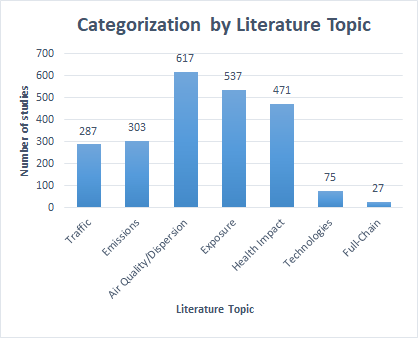
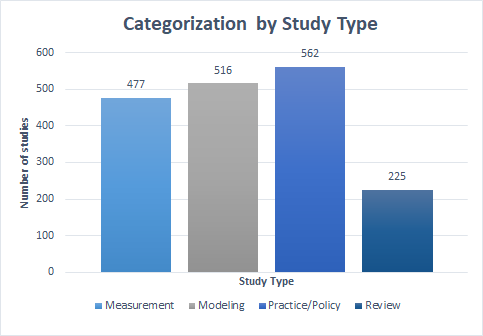

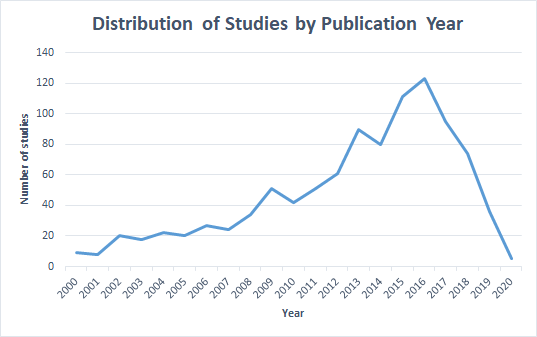
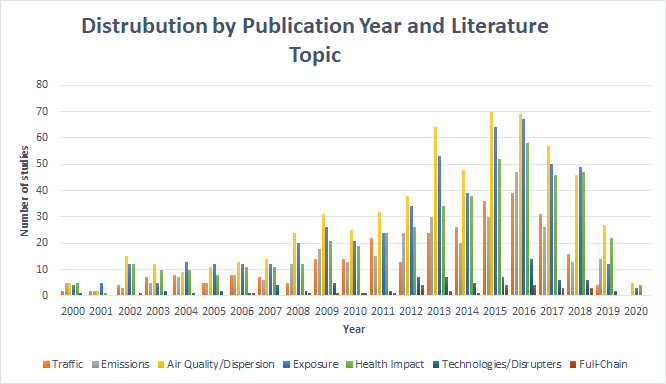
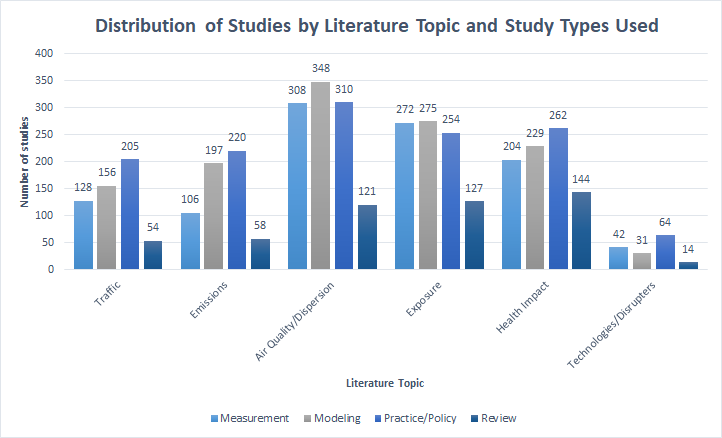
The graphs above display the distribution of library studies according to literature topic, study type, source, publication year, the distribution of studies across publication year and literature topic, and the distribution of studies across literature topics and study types used. The quantitative data is visualized, providing a better understanding of the content included in the library thus far. The library’s characteristics are dynamic due to the ongoing addition of new literature.
In addition to quantitative analyses, a qualitative analysis was performed using NVIVO software. 686 initial literature libary studies were input to this tool, and a word cloud was generated to identify the 70 most frequently used terms with at least 5 letters across each article’s full text. Irrelevant terms, such as “because”, “including”, “however”, “table”, and “through” were added to a ‘Stop Word’ list and manually excluded from the Word Cloud. This visual displays frequently used words, such as “exposure”, “health”, and “pollution” to name a few, and is shown below.
These analyses have provided insight as to where the literature is clustered as well as where it is missing, and identifies knowledge and research gaps. This information highlights areas that can be addressed in future studies to fill the current gaps.




